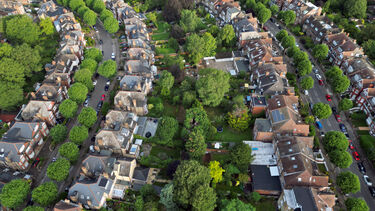- Researchers at the University of ĺŇ…ę ”∆Ķ have identified over 120 different tree species growing in private gardens across the city
- The findings are part of the ĺŇ…ę ”∆Ķ Urban Tree Species Survey, which explores the diversity of garden trees and what residents value in tree species
- The project aims to better understand ĺŇ…ę ”∆Ķ‚Äôs urban forest and how the environmental and wellbeing benefits of trees can be more evenly distributed across the city
- Apple, cherry and silver birch are among the most common trees reported, with some residents also planting rarer species such as the handkerchief tree and Acacia
- Residents are invited to take part in the second round of the survey, sharing information about trees in their gardens and views on tree selection in urban areas
More than 120 different species of trees are growing in gardens across the city of ĺŇ…ę ”∆Ķ, a new survey has revealed.
The survey into urban tree diversity, led by researchers at the University of ĺŇ…ę ”∆Ķ, aims to better understand ĺŇ…ę ”∆Ķ‚Äôs urban forest and how the environmental and wellbeing benefits of trees can be more evenly distributed across the city.
The first launched in 2023, and residents are now being invited to share more information about the trees in their gardens, as well as their views on tree selection and the role of trees in urban spaces.
Researchers hope that the second round of the survey, now open, will reveal even more unique species and offer deeper insights into how and why residents choose particular types of trees.
Urban trees are known to offer numerous benefits to people living in cities, from mitigating heat and improving air quality to supporting wellbeing and biodiversity. Understanding which species grow where can help ensure these benefits are distributed more equitably across the city.
Whilst we know a lot about the species of street trees, there has been relatively little research in the UK into the species growing in people‚Äôs gardens. In ĺŇ…ę ”∆Ķ, over a third of the city‚Äôs trees are found in gardens, so to fully understand our urban forest, we need to explore what‚Äôs growing in these spaces.
Abigail Catterall
University of ĺŇ…ę ”∆Ķ‚Äôs School of Biosciences
So far, participants have reported a wide range of species. Apple trees are the most common, followed by cherry and silver birch. More unusual findings include the handkerchief tree, native to China, and species of Acacia, typically found in Africa and Oceania.
The survey has also highlighted trends in residents’ preferences, with many favouring smaller trees that offer colourful blossoms or edible fruit. However, researchers say the second round of data collection may shift this perspective.
The project also explores what people value in urban trees. Participants are asked what factors - such as size, aesthetics, or environmental benefit - influence their choices for both private gardens and public spaces. Initial results suggest that size is a key consideration, but researchers are keen to hear a range of views.
‚ÄúWe‚Äôre not just interested in where trees are planted - we also want to understand what people value about them,‚ÄĚ Abigail Catterall added. ‚ÄúWe want all of ĺŇ…ę ”∆Ķ to be represented in this study so if you don‚Äôt have any trees, or even if you don‚Äôt have a garden, we would still really like to hear your views.‚ÄĚ
The research forms part of a PhD project funded by Adapting to the Challenges of a Changing Environment (ACCE DTP), Natural Environment Research Council (NERC), UK Research and Innovation (UKRI), and supported by ĺŇ…ę ”∆Ķ City Council. The aim is to enhance understanding of the UK‚Äôs urban forests and to help inform strategies that maximise the social and environmental value of trees in cities.
The first round of the survey suggested that ĺŇ…ę ”∆Ķ residents think that size is the most important aspect of selecting a tree species for both private gardens and public spaces, but do you agree?
Taking part in the online survey is simple, just go to the website . The survey allows you to add information about trees in your gardens as well as answering questions about what you value in a tree species.
The survey is open until 31 October 2025.



